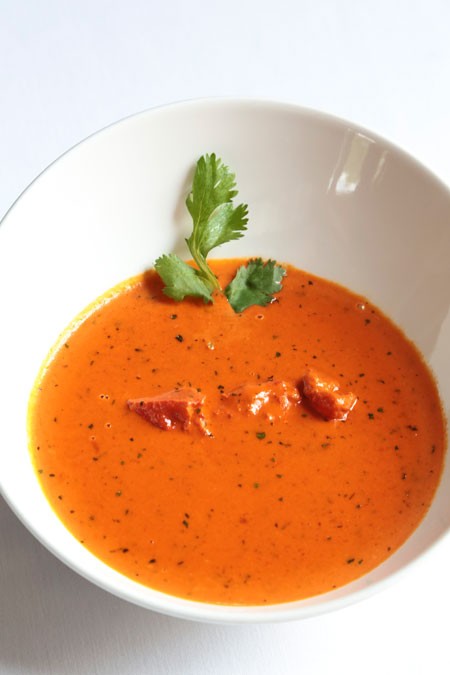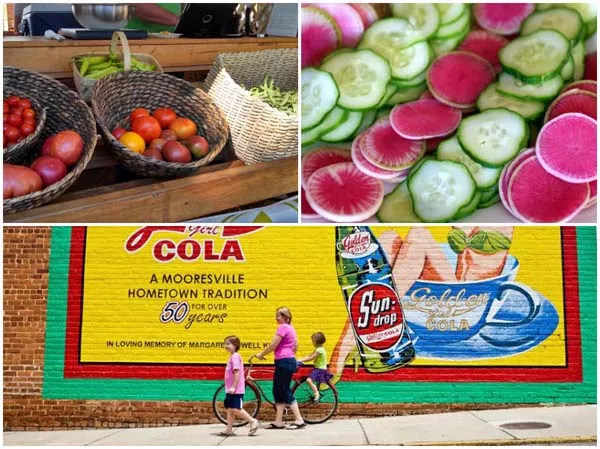Monday, July 14, 2014
Down and Dirty NoDa's own farmers market is now open
Posted By Alison Leininger on Mon, Jul 14, 2014 at 9:30 AM
There's nothing like walking into a cool, dimly lit bar on a bright summer morning and fondling some melons. That's no euphemism. Saturday mornings, The Evening Muse and its diurnal incarnation The Daily Press are now hosting NoDa's own farmers market.
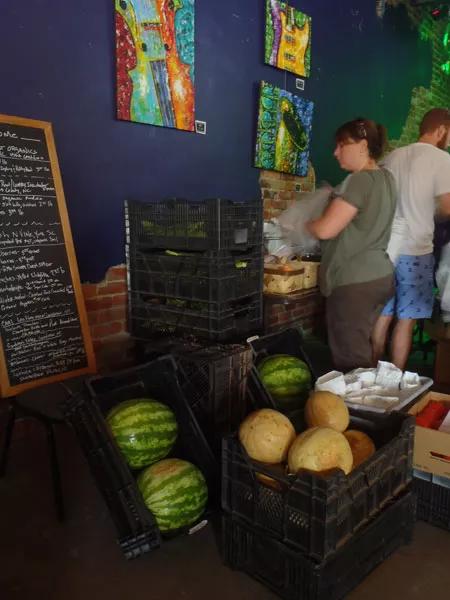
Thursday, July 10, 2014
Down and Dirty What to do with that weird squash
Posted By Alison Leininger on Thu, Jul 10, 2014 at 4:14 PM
At the Matthews Community Farmers Market, a woman stands at the Walnut Ridge Farm booth, holding what looks like a light green flying saucer the size of a lunch plate. Even after proprietor Daryl Simpson names the squash's variety - Early White Bush - and describes its taste, she has one remaining question. "So...how would you cook this?"
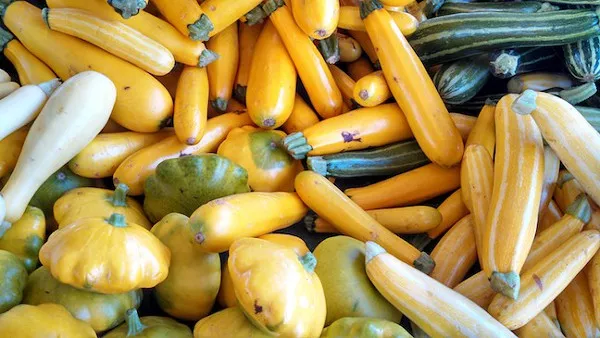
- Alison Leininger
- An array of Walnut Ridge Farm's squash.
Straight-neck, crook-neck, patty pan, zephyr... squash has been growing in this soil since before the Europeans' arrival, yet it remains a conundrum for many of us. The variety is stunning and picturesque - long, round, yellow, green, purple - but it can also be intimidating.
At Newtown Farms in Waxhaw, Sammy Koenigsberg is growing seven different varieties, all of them falling under the label of "summer squash." Regardless of color or shape, these types possess thin skin and a relatively short shelf life, and fall into three general categories: familiar yellow squash, green zeppelin-shaped zucchini and the flying-saucer patty pan type. While they all display "subtle variations in flavor, shape and color," Koenigsberg says they are interchangeable in cooking. "For example they could all be used in a squash casserole, sautéed with onion, [or] brushed with olive oil and grilled."
So, why bother with more than one variety? According to chef Chris Coleman, who currently plays with five different kinds in the kitchen at The Asbury, "They all bring different things to the table."
Wednesday, July 9, 2014
Keia Is Hungry Eat This: Chicken Tikka Masala at Copper
Posted By Keia Mastrianni on Wed, Jul 9, 2014 at 10:00 AM
The origins of chicken tikka masala are controversial, to say the least. Whole countries lay claim to the dish and long-standing lore has perpetuated a muddy genesis at best. The short story is this: A man walked into a restaurant called the Shish Malal in the 1970s and ordered the chicken tikka, which he claimed to be dry. An irked Bangladeshi chef, in order to satisfy the quintessentially British hankering for gravy on everything, dumped a can of tomatoes, spices and yogurt on top, and voila! Chicken tikka masala as we know it was born. Again, this is hearsay. There are entire books dedicated to the origins of this crimson concoction.
Chicken tikka masala has more iterations than pimento cheese and evokes the same patriotic fervor. In town, Copper Indian Cuisine on East Boulevard makes a velvety smooth version that your mouth will want to claim for itself.
Monday, July 7, 2014
Thursday, July 3, 2014
Down and Dirty Edible flowers offer beauty and flavor
Posted By Alison Leininger on Thu, Jul 3, 2014 at 9:49 AM
Food lovers know that we eat with our eyes before the first morsel touches our tongue. So as summer comes a'calling, it's no surprise to see flowers popping up on plates all over town. Squash blossoms may be headliners (read this post) but from bachelor's buttons to zinnias, Charlotte's chefs are playing with all types of colorful blooms.
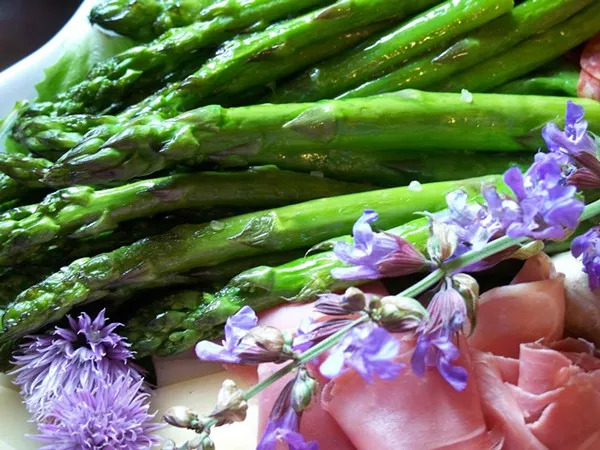
- Kim Shaw
- Asparagus with chive and sage flowers
Flowers are pretty, but you might wonder whether they bring real flavor to your food. A recent Facebook conversation initiated by chef Joseph Bonaparte (former culinary director at the Art Institute of Charlotte, currently at Horry-Georgetown Technical College in Myrtle Beach) raised just that question. "[Is] putting little flowers on your plates the new micro greens?" he wondered.
Wednesday, July 2, 2014
Drinks Create your own mocktail with this shrub recipe
Posted By Keia Mastrianni on Wed, Jul 2, 2014 at 1:57 PM
This week, we look into the rise (or lack thereof) of creative craft beverages sans alcohol. Mocktails. We asked Kevin Gavagan, owner of the pop-up cocktail concept Haunt Bar, to fill us in on what he uses for tasty non-alcoholic beverages and he talked of shrubs. No, not bushy plant life, but vinegar-based infusions made typically with fresh fruit and herbs.
Gavagan likes to make a sophisticated soda with his shrubs and shared his recipe for Haunt Bar's popular grapefruit shrub which he uses in alcoholic beverages such as the Paloma Paradiso and a Grapefruit gin and tonic.
At home, Gavagan says, he likes to add the shrub to club soda or seltzer for a nice homemade soda. Experiment with additions like cinnamon and clove or add different vinegars for a new twist.
Haunt Bar Grapefruit Shrub
1 Cup Sugar
1 Cup Vinegar (Apple Cider is a good choice)
2 Medium Grapefruit
(Spice or other Additions)
Peel and rough chop the grapefruit
Put vinegar and sugar in a sauce pan, warm and stir until sugar dissolves
Add grapefruit and peel (along with any other ingredients)
Bring to a boil and turn off and cover
Let it steep until cool
Bottle and keep for up to six weeks in the fridge.
Grapefruit Summer Spritzer
Fill a glass with ice
Start with one part shrub to two parts sparkling water
Give it a stir, garnish with a piece of grapefruit peel
Sip, and enjoy.


